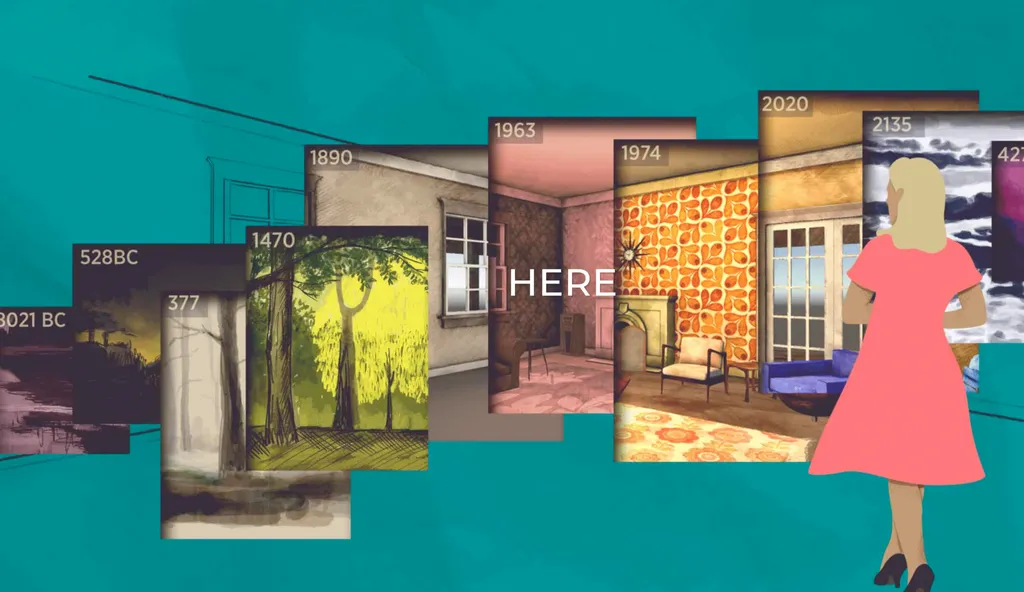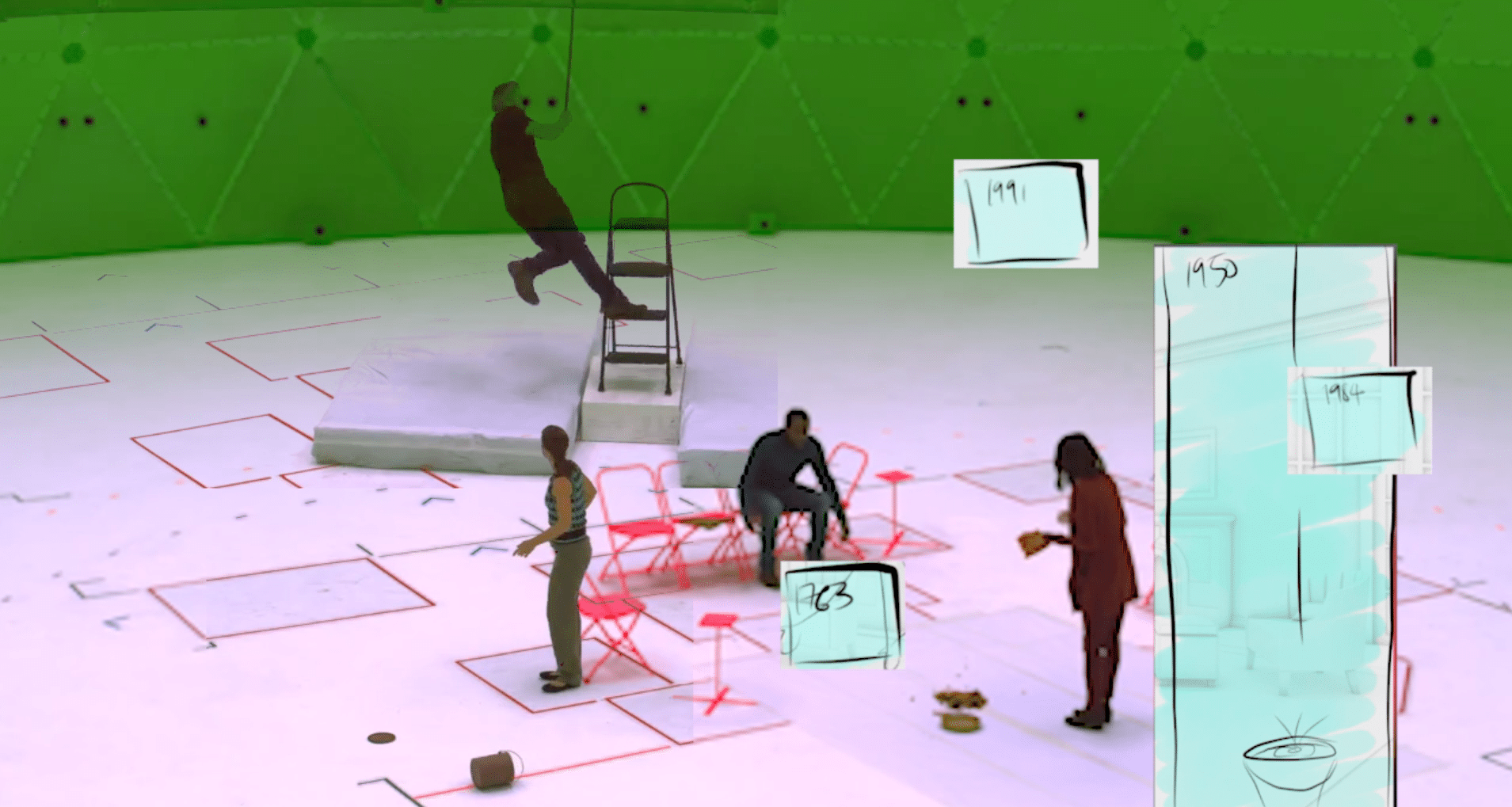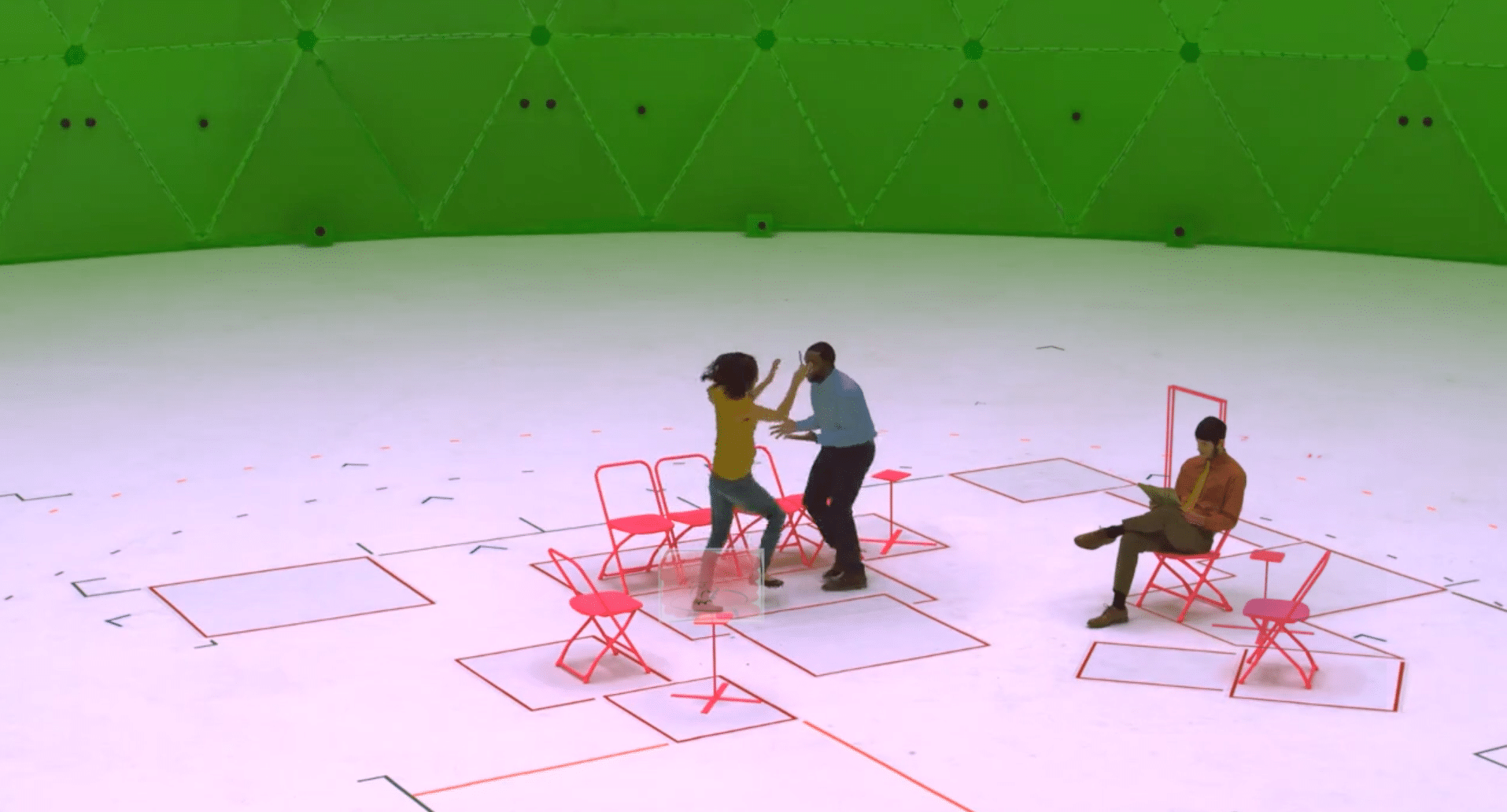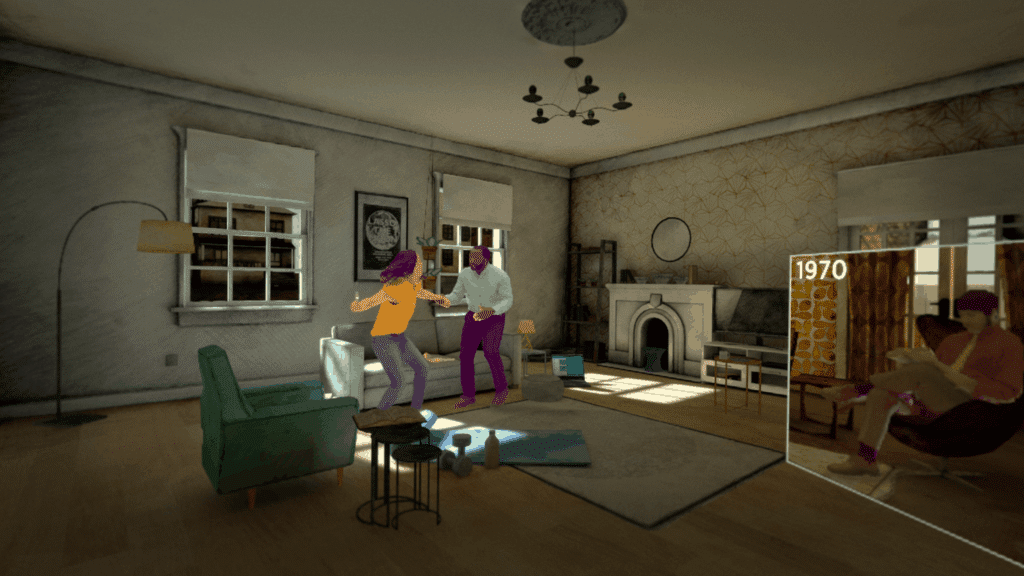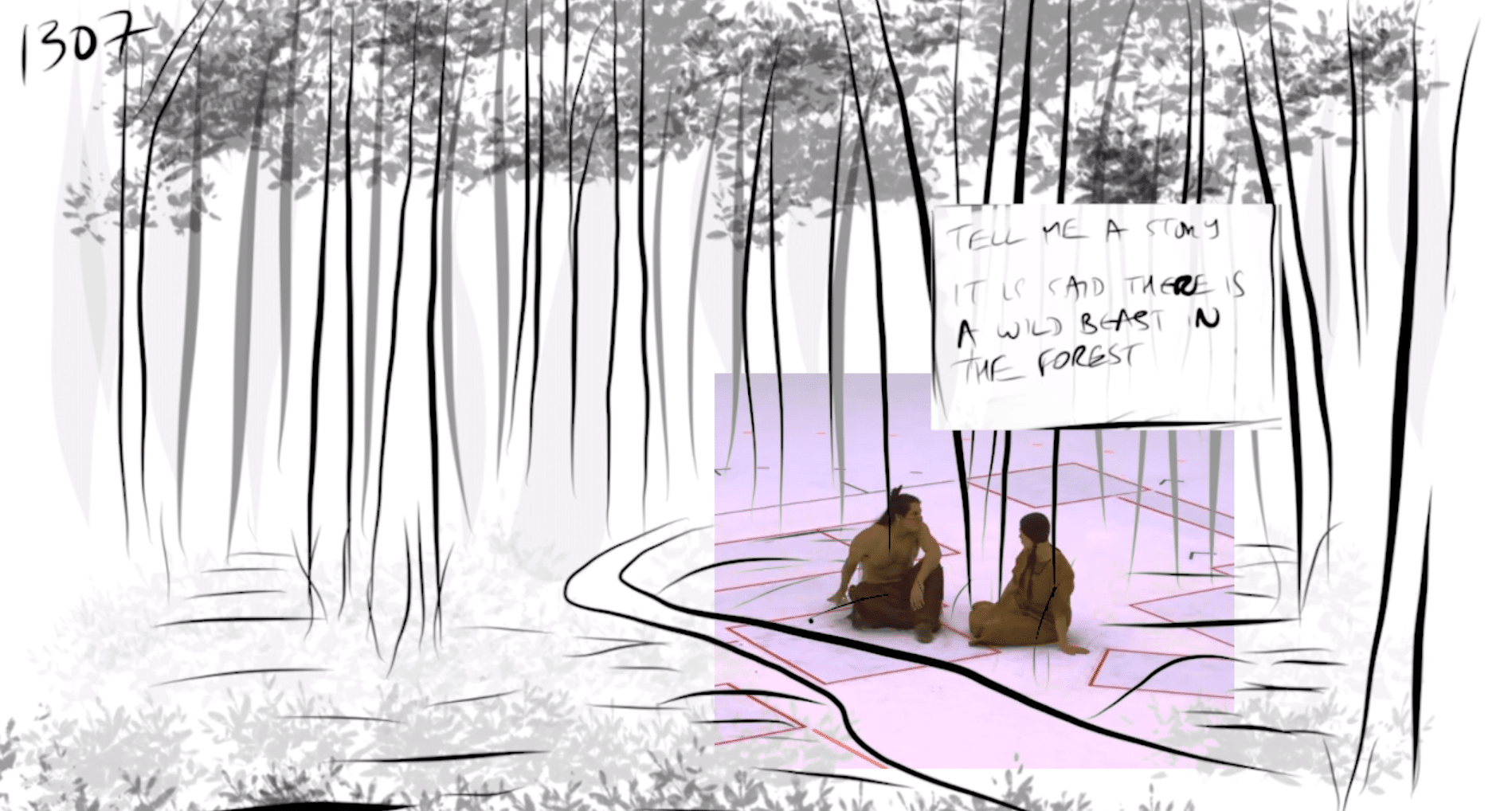Here VR, quite literally, hits home. An adaptation of the 2014 Richard McQuire graphic novel — which itself was first realized in a 1989 comic strip — it’s a VR experience in which the humans are the supporting cast, the starring spotlight instead placed upon the four walls that house them.
It opens to a cosy, if relatively drab living room, but quickly catapults you into a rather amazing journey.
Here VR Hits Home
Suddenly, windows into seemingly other worlds start to encroach upon the room. They give you slight cause for concern until you peer through and realize that they are in fact showing you the exact same location at a completely different point in time. Characters drop in and out of existence, perhaps just taking their first steps into their new home, preparing to leave it or pretty much anything in between.
Good news is celebrated, warm memories are shared and occasional upsets are revealed. At one point you even slingshot back to a time long before the house and surrounding neighborhood even existed. Crucially, each new time period feels authentically realized, and the power of VR truly transports you to different eras of personal history on the fly. I’ve only seen the first part of Here, but I was struck by its intimate portrayal of lives lived, revolved around this (almost) ever-present anchor. It has a texture and tangible history, making it completely unlike the VR homes and hangouts we build for ourselves.
Stitching together this multi-faceted narrative, as you might’ve guessed, was no easy task.
Here is the latest VR experience from Lysander Ashton and the team at 59 Productions, who previously released the excellent Nothing To Be Written on Oculus Go. It may have made its debut during the Venice Film Festival back in August, but it was first conceived back in the very early days of VR. “I came across the graphic novel years ago, like six, seven years ago, I think,” Ashton says of the project’s origins. “When I’d first started getting interested in VR. I remember thinking straight away, like this would make the perfect VR adaptation.”
Ashton was struck by Here’s fitting sense of place, but couldn’t quite wrap his head around how a production that would involve multiple iterations of the same environment and 50 or so characters each operating within their own timezones could possibly be tamed into a coherent structure. Then he came across Intel Studio’s volumetric capture technology.
You’ve possibly heard of that term before. Volumetric capture is the process of recording a real-life performance or environment — using many tens if not hundreds of cameras — and then using software to stitch each individual camera’s capture into a single, 3D asset. Microsoft has its own set of studios across the world, but Intel’s, seen in this Siggraph 2020 video, is the largest, allowing for multiple people to perform at once.
“Unlike most smaller one person or two-person volumetric capture studios, you could build the entire room in that space,” Ashton explains. And so a seven-year dream quickly materialized into reality, shot in LA just before Christmas last year (luckily avoiding the complications of 2020).
Even with the benefits of a bigger stage (not to mention utilizing 59’s existing architectural expertise from other projects) though, filming Here sounds like an immensely intricate process. A heap of administrative documents planning out room sizes and storyboarding Ashton shows me confirms it.
“It’s an incredibly complicated logistics exercise because there were– I think we had over 200 different shots and it’s like a hundred characters in there as well, “Ashton says. “But we didn’t have the budget for a hundred so we have actors playing multiple roles. And working out all of the different costumes required [us to say] “Well we can’t have that person in the same scene. Because this is in 1960 and that’s happening at the same time as something in 1300.””
But logistics came together through software, and the team managed to shoot scenes with some linearity before merging worlds in post-production. They even had to mark out every piece of furniture for every given time zone so that no characters managed to ghost their way through them during the film. It sounds like a herculean test of time-management that you might think would be better spent with an animation studio, but Ashton says it was this technology that made this particular version of the piece possible. “What’s so great about the original graphic novel is it’s just: people, people, people, people from all of these different things that happen all the time. This volumetric capture kind of gave us the opportunity to be able to do that – massive amounts of people.”
Complicated enough on its own, then, and that’s without even considering how the piece might adhere to the source material – a series of pages you’re free to flip back and forth though and pick and choose which narratives to focus on. While Ashton says Here is very close to the original in many ways, it also makes some key changes. “We’ve totally restructured the order of it and we’ve added in a central thread of a couple moving into the house,” he explains, “So unlike the graphic novel, where there is no hierarchy between the different stories, we have added that in. We felt that because, with the graphic novel, you’re encouraged to sit with it and go back and forth through all of these little mini-narratives, for something that was going to be living here that people would generally go to see once we felt it was important to have a core narrative.”
McQuire himself had a hand in the piece, joining Ashton and co during some of the production and offering some crucial guidance. “One of the key things he said was about making the big things small and the small things big,” Ashton says. “So you’re hinting at these epic sweeps of history through tiny mundane moments. It’s an epic patchwork of all of human existence, that builds out of any one of those moments that are forgettable and mundane and sort of trivial. There are no indications of war or kind of huge sweeping events that happen. They’re hinted at really.”
Still, as impressive as the piece is in its current form, Ashton believes it will really come together in the second part as 59 starts doubling down on the character through lines. “So the world and mechanism and the idea of being in all of these places at once is thrilling, but it doesn’t quite have the emotional heart to it,” he reasons. “And it will, once we can really tell these stories and once you can really follow the lead characters through, on their journey, I think it’s going to take it to this entirely next level.”
Personally, I can’t wait to see what it brings to the table. 59 continues to work on the final part, then, with the hopes of releasing it for download next year. There were once plans to tour is across the US and UK though, when I spoke to Ashton in September those plans had been tabled. Perhaps more recent news might have an impact on the rollout (fingers crossed). Either way, I’m looking forward to welcoming it home in 2021.
We’ll have more from Here VR as soon as we hear more!

